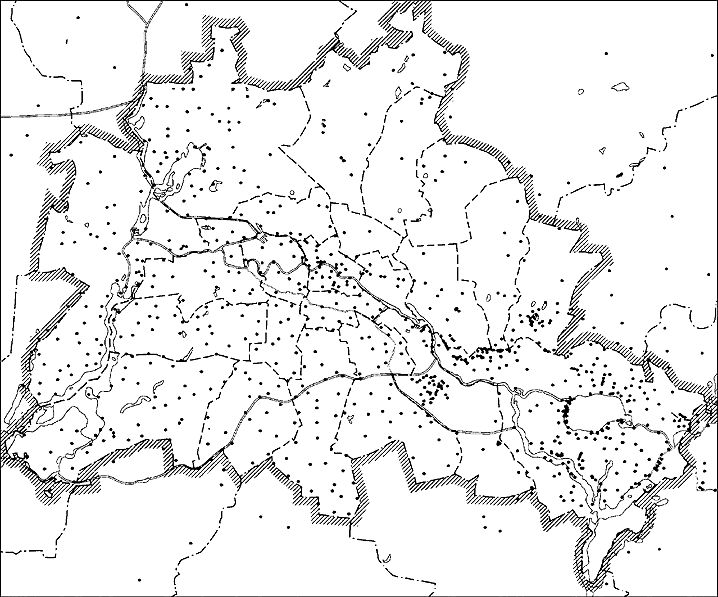Development of Depiction
Because the questions previously described remain unclear, the scale for the all-Berlin groundwater contour map was changed. Instead of the 1:50,000 scale used in the Gewässerkundlichen Jahresbericht (Hydrological Annual Report), groundwater contours are depicted at a scale of 1:125,000.
The contour maps of near-surface groundwater were produced with a computer-aided method for the spatial interpolation of point scattered initial data. The process for preparation of contour line-drop maps (SCOP) connected to the Berlin environmental information system served as methodological instrument. A linear function with a basic grid of 700 m was chosen as base function.
Observation wells for a sufficiently dense and regularly distributed data network were selected according to the following criteria:
- filtering in near-surface groundwater aquifers (as far as known)
- position of measuring points to each other
- an observation period as long as possible
A total of 950 observation wells in Berlin remained, depicted in Figure 1, and 50 observation wells in the surrounding areas.

